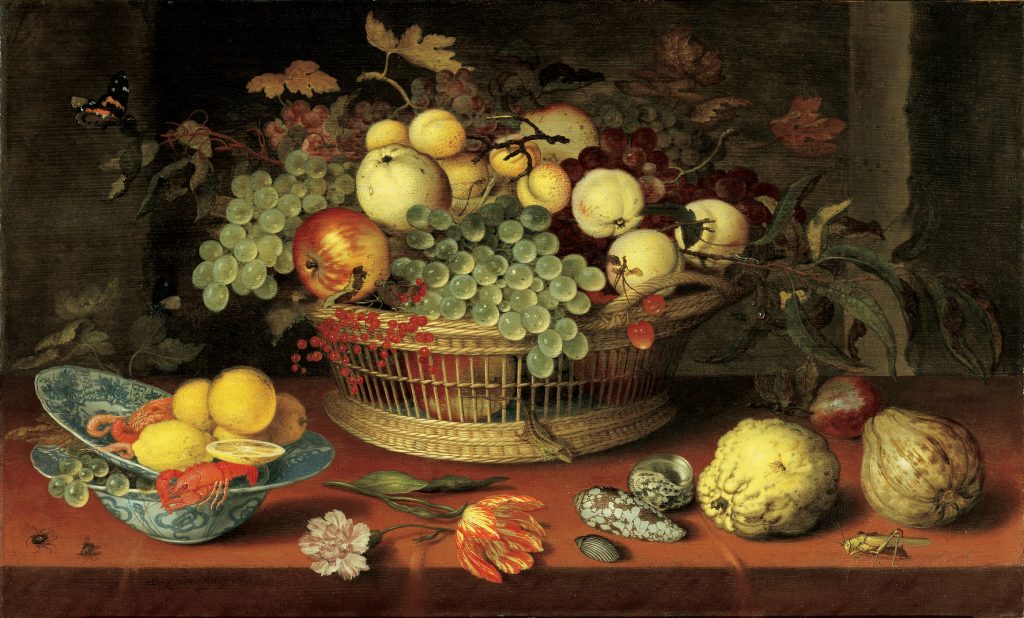Still Life with Basket of Fruit (work of art)
Artwork Info
Key Ideas
- This is a still life painting. Still lifes depict natural (usually nonliving) and human-made objects.
- Still life paintings were popular in the Netherlands in the 17th century. During that time Dutch painters often depicted objects from the natural world, including fruit, insects, and rare flowers.
- Some of the objects in this painting, including the shells and the fruit bowl, were imported from other countries. Dutch colonization and trade efforts brought these objects to the Netherlands.
- Balthasar van der Ast was a Dutch Golden Age painter. He is best known for his still life paintings of shells, flowers, and fruit.
Learn More
Still lifes generally feature an arrangement of natural objects (like fruit, shells, and flowers) and human-made objects (like bowls and baskets). Many artists created still lifes to show off their painting abilities. These types of paintings often include clues about religion, politics, or society.
In the 17th century, in what is known as the Dutch Golden Age, Dutch merchants developed successful colonization and trade efforts. Still life paintings were popular in the Netherlands during that time. Dutch painters often depicted objects from the natural world, including fruit, insects, and rare flowers. Many of the objects they included in their still life arrangements came from different locations around the world.
Some of the objects depicted in this still life are evidence of the extensive trading between the Netherlands and other countries. The seashells in the foreground have been identified as species from seas off the coasts of the East and West Indies and Africa. The small fruit bowl is an example of Chinese porcelain known as Kraak ware. This type of porcelain was often depicted in Dutch paintings from this time period. Kraak ware, also called Kraak porcelain, was made in China and exported to Europe. It became a luxurious and popular product in the Netherlands.
Balthasar van der Ast was a Dutch Golden Age painter. He is best known for his still life paintings of shells, flowers, and fruit. He often depicted fruit and flowers in different stages of ripeness, to represent the temporary quality of life. Many of his still lifes include finely detailed images of small insects and lizards.
Additional Resources
Resources for Teachers
- Read an article about Dutch trade in Asia.
- Read an article about still life paintings in the Netherlands.
- Read an article that explores the term “Dutch Golden Age.”
Resources for Students
- View two other still life paintings by Balthasar van der Ast.
- See an example of Kraak ware.
- View a webpage to learn how Dutch artists illustrated the temporary quality of life.

